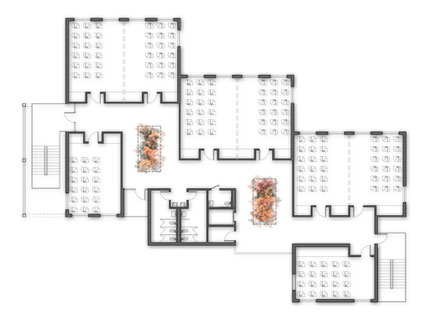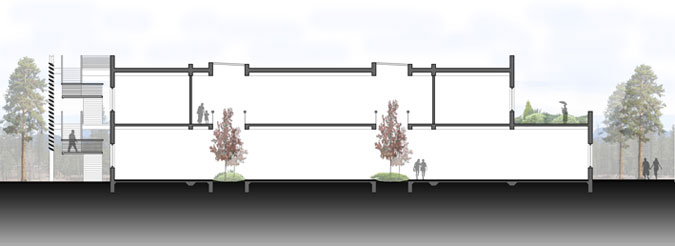






The library is one of the most quintessential building types that any educational campus could possess. While it is argued that the relevance of books shall wane in the future in favor of electronic databases, paper-based print still remains vital to all educational institutions worldwide. That said, the rise of the Internet makes libraries more powerful than ever. Students linked into various scholarly indices may access scholarly journals in seconds. Trends towards wireless technologies and personal computing should not be ignored. Therefore, walls of this library shall be design with “electromagnetic transparency” in mind that allows Wi-Fi broadcasts without “dead zones.” |
 |
|
 |
||
LEED principles shall guide the design of the library’s interior—specifically LEED’s section on Indoor Environmental Quality. Controlled natural light permeates over 75% of the interior spaces. Additionally, the exterior screens mentioned earlier allows for larger windows to view the exterior. Finally, the most unique spaces are the two internal forests featuring the site’s exposed natural soil. Directly above these features are large skylights that permit natural photosynthesis. Shrubs and trees growing from the natural soil will help clean the air of impurities, while providing a soothing effect for library customers. |
||
![]()



